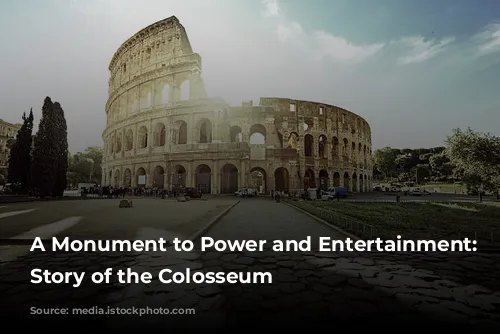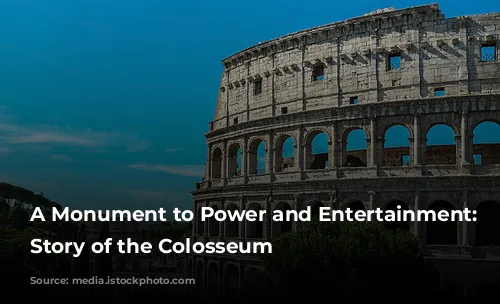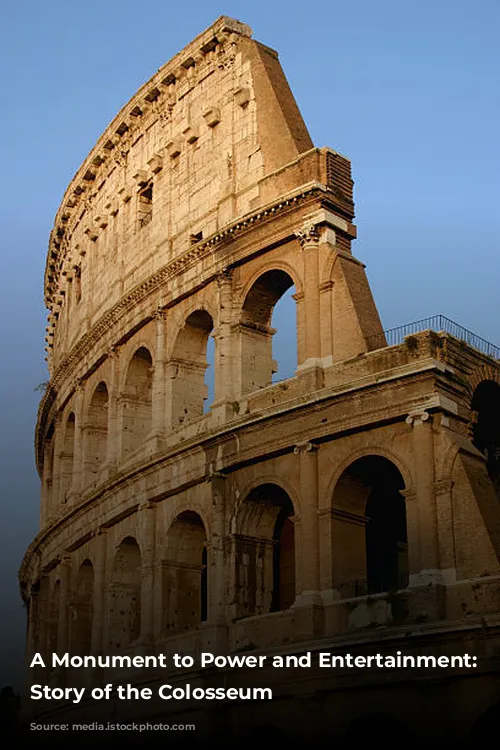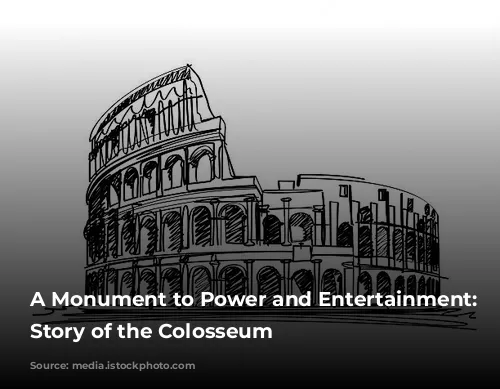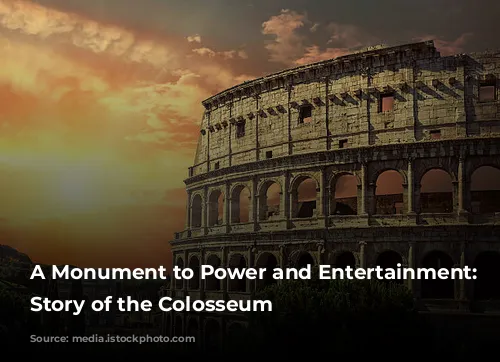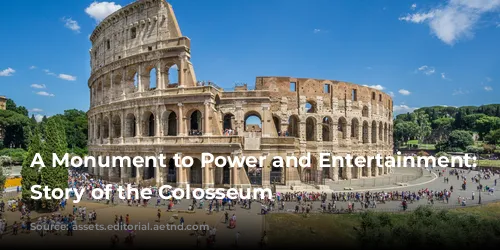The Colosseum, also known as the Flavian Amphitheater, is more than just a spectacular architectural monument – it’s a window into the heart of ancient Rome. Built in the first century A.D., it is most famously remembered as the site of blood-sport entertainment, featuring gladiators, wild animals, and more. But the Colosseum remains an enduring symbol of the Roman Empire, showcasing the architectural and engineering prowess of the Flavian Dynasty.
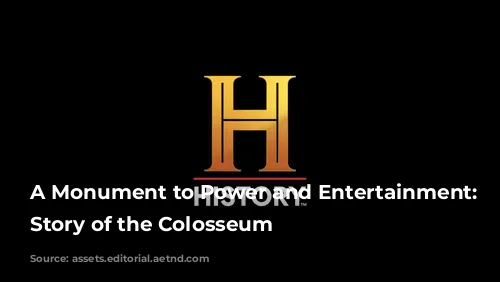
From Ruins to Resurgence: The Flavian Dynasty’s Vision
The Flavian Dynasty, led by Vespasian and his sons Titus and Domitian, embarked on a massive reconstruction program to restore Rome after years of fire, plague, and civil war. This dynasty, which ruled for 27 years, dedicated itself to revitalizing the city, rebuilding structures, and restoring monuments.
Vespasian, seeking to solidify the dynasty’s legacy, ordered the construction of a new amphitheater in the heart of Rome in 70 A.D. This grand project was funded with the spoils from the Roman conquest of Jerusalem during the First Jewish-Roman War. Dedicated a decade later, the Colosseum became a powerful political symbol of Rome’s resurgence.
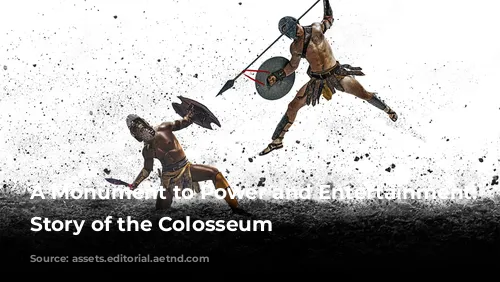
An Architectural Masterpiece: The Colosseum’s Design and Construction
The Colosseum was a marvel of architecture and engineering, the largest and most complex permanent amphitheater of its time. Built with an astonishing 3.5 million cubic feet of travertine, concrete, marble, stone, and timber, the Colosseum reached a towering height of 157 feet, comparable to a 15-story building. Its massive size could accommodate a staggering 50,000 to 80,000 people.
Nathan Elkins, deputy director of the American Numismatic Society and author of “Monument to Dynasty and Death: The Story of Rome’s Colosseum and the Emperors Who Built It,” highlights the Colosseum’s significance in a broader context. “The Colosseum…was part of an entire complex of buildings that Vespasian and his sons were building throughout Rome as part of a bigger program to erase [their predecessor] Nero’s mark on the city—and to champion their own achievements.” Titus, at the Colosseum’s dedication, presided over 100 days of games, showcasing gladiatorial combat and spectacular animal spectacles.
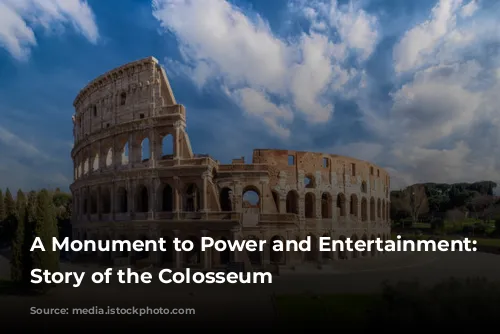
From Nero’s Estate to a Symbol of Roman Society: The Colosseum’s Location and Function
The Colosseum’s location held powerful meaning. It was constructed on the site of Nero’s estate, the Domus Aurea, which featured an artificial lake and a towering bronze statue of Nero himself, the Colossus of Nero. The Colosseum’s name, in fact, derives from its proximity to this statue. The lake was filled in to make way for the amphitheater, a symbolic act of erasing Nero’s memory and replacing it with the Flavian dynasty’s dominance.
The Colosseum’s construction was also cleverly designed to reflect and reinforce the rigid social hierarchy of Roman society. Nero had made his estate accessible to all, a move that displeased the senators, who disliked the open access to the city center. By building the Colosseum, Vespasian and his sons created a space for public enjoyment and entertainment, but they also carefully structured the seating arrangement to ensure a clear division of classes.
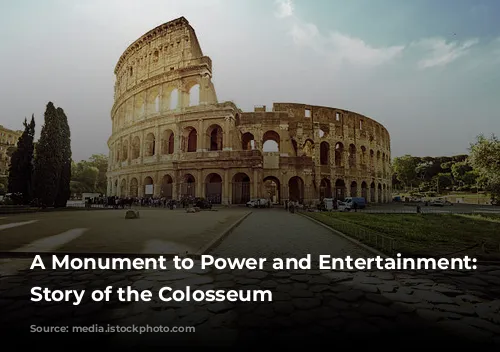
Social Order in Stone: Seating Arrangements and Accessibility
The Colosseum’s seating was meticulously organized, reflecting social status, wealth, and gender. The best seats, closest to the action in the arena, were reserved for the Emperor and the senatorial nobility. Above them sat the Equestrian order, former cavalry members who had achieved success as merchants, artisans, and bureaucrats. The remaining 95 percent of Rome’s population—women, foreigners, and the poor and enslaved—occupied the less desirable seats, known today as the nosebleed sections.
To ensure the orderly flow of spectators, the Colosseum was designed with four entrances for the political and religious leaders, and 76 for ordinary citizens. Corridors separated social groups, preventing spectators from freely moving between sections. However, the Colosseum’s elliptical architecture cleverly ensured that all spectators, regardless of their seating location, had a clear view of the arena.
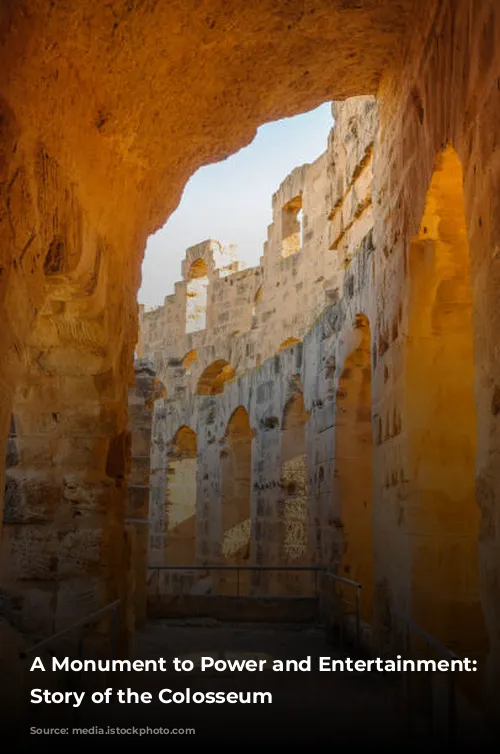
The Architectural Legacy of the Colosseum: Innovation and Influence
Ancient Rome was no stranger to amphitheaters, but most were temporary structures made of wood. The earliest known permanent amphitheater, built in Pompeii around 80 B.C.E., was made of stone and could accommodate 20,000 spectators. The Colosseum, however, was a landmark achievement in architectural innovation.
The architect of the Colosseum remains unknown, but its design clearly reflects the influence of earlier structures, such as Greek theaters. The Colosseum’s grandeur is evident in its impressive use of columns, arches, and barrel vaults. However, the most significant innovation was the extensive use of concrete.
Elkins emphasizes the critical role of concrete in the Colosseum’s construction, saying, “The concrete construction is really what allows the Colosseum to be built. It was probably the most widespread use of engineering and construction with concrete in that period of time.”
The Colosseum’s solid concrete foundation, combined with its deep foundation laid in the challenging soil conditions of the Tiber River wetland area, has ensured its survival for over 2,000 years.
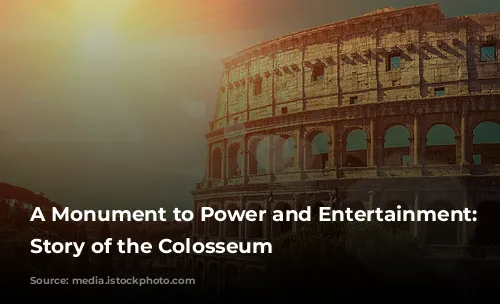
Hidden Wonders: The Colosseum’s Engineering Feats
Beyond its structural ingenuity, the Colosseum boasted a range of sophisticated engineering features. An intricate drainage system allowed for the efficient removal of water used in staged sea battles. A retractable awning, operated by sailors, provided shade for spectators during rain or the intense Roman sun.
The hypogeum, a network of chambers and tunnels beneath the arena floor, housed props, scenery, and performers when not in use. The Colosseum’s ingenious system of trap doors, pulleys, and lifts facilitated dramatic entrances for both performers and scenery, allowing even elephants to seemingly appear out of thin air.
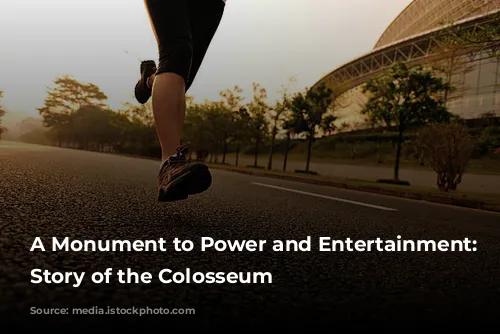
The Colosseum’s Financing: A Controversial Legacy
While the precise cost of building the Colosseum remains unknown, many scholars believe that it was partially funded with the booty acquired by Roman soldiers during their conquest of the Jerusalem Temple during the First Roman-Jewish War. An inscription at the Colosseum states: “The Emperor Titus Caesar Vespasian Augustus ordered the new amphitheater to be made from the (proceeds from the sale of the) booty.”
For generations, a common belief has been that the labor force for constructing the Colosseum consisted of 100,000 Jewish slaves captured during the Siege of Jerusalem. However, Elkins expresses skepticism, stating, “It’s the kind of thing Romans might do to add insult to injury. You not only sell them into slavery, but then you make them build something that is financed by the destruction of their temple.”
Elkins emphasizes that this claim lacks supporting evidence from ancient sources. “It came from a 20th-century archaeologist, and it has been repeated over and over again. A significant amount of slaves would have been used, but we don’t know 100 percent where those slaves came from.”
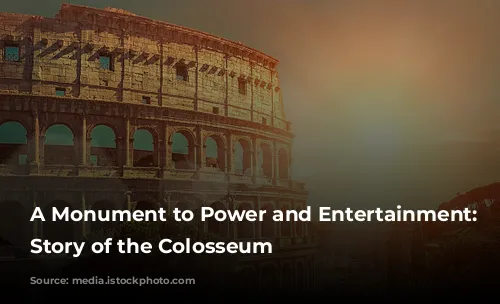
The Colosseum’s Enduring Legacy: A Symbol of Entertainment and Architectural Prowess
The Colosseum stands as a testament to the power and ingenuity of the Roman Empire. Beyond its historical significance, it serves as a window into the social structure and cultural practices of ancient Rome.
The Colosseum’s design, with its use of arches for support, elliptical shape, and carefully organized seating system, has profoundly influenced the design of modern sports stadiums. The Colosseum remains an enduring symbol of human ingenuity, reminding us of the power of architectural innovation and the lasting impact of entertainment on culture.
